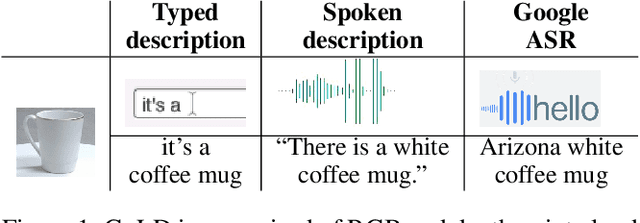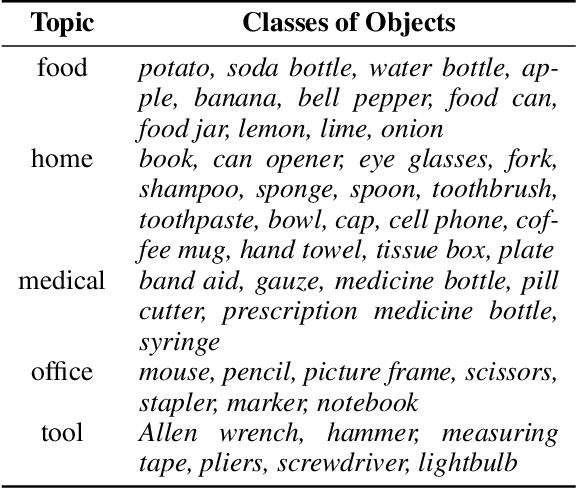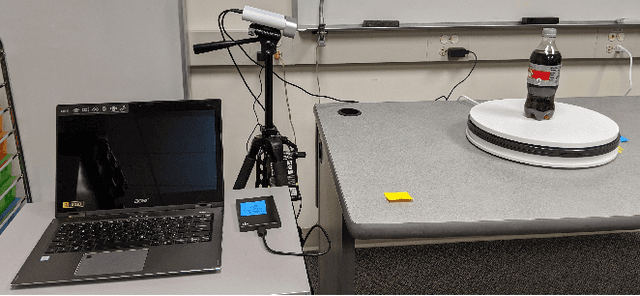Presentation and Analysis of a Multimodal Dataset for Grounded LanguageLearning
Paper and Code
Jul 31, 2020



Grounded language acquisition -- learning how language-based interactions refer to the world around them -- is amajor area of research in robotics, NLP, and HCI. In practice the data used for learning consists almost entirely of textual descriptions, which tend to be cleaner, clearer, and more grammatical than actual human interactions. In this work, we present the Grounded Language Dataset (GoLD), a multimodal dataset of common household objects described by people using either spoken or written language. We analyze the differences and present an experiment showing how the different modalities affect language learning from human in-put. This will enable researchers studying the intersection of robotics, NLP, and HCI to better investigate how the multiple modalities of image, text, and speech interact, as well as show differences in the vernacular of these modalities impact results.
 Add to Chrome
Add to Chrome Add to Firefox
Add to Firefox Add to Edge
Add to Edge